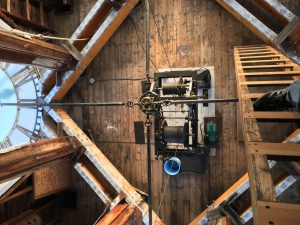Episode 69: Home Again

On this Thanksgiving week, we’re presenting a few favorite segments from our archives. We dig into our energy series “The Big Switch” with stories about solar power on homes and farms, and profile a new large-scale passive housing movement. And singer-songwriter Dar Williams tells us what she’s learned about making a vibrant community while writing a new book. Plus, the craft beer industry is exploding in New England, but another time-honored trade is in danger of disappearing.
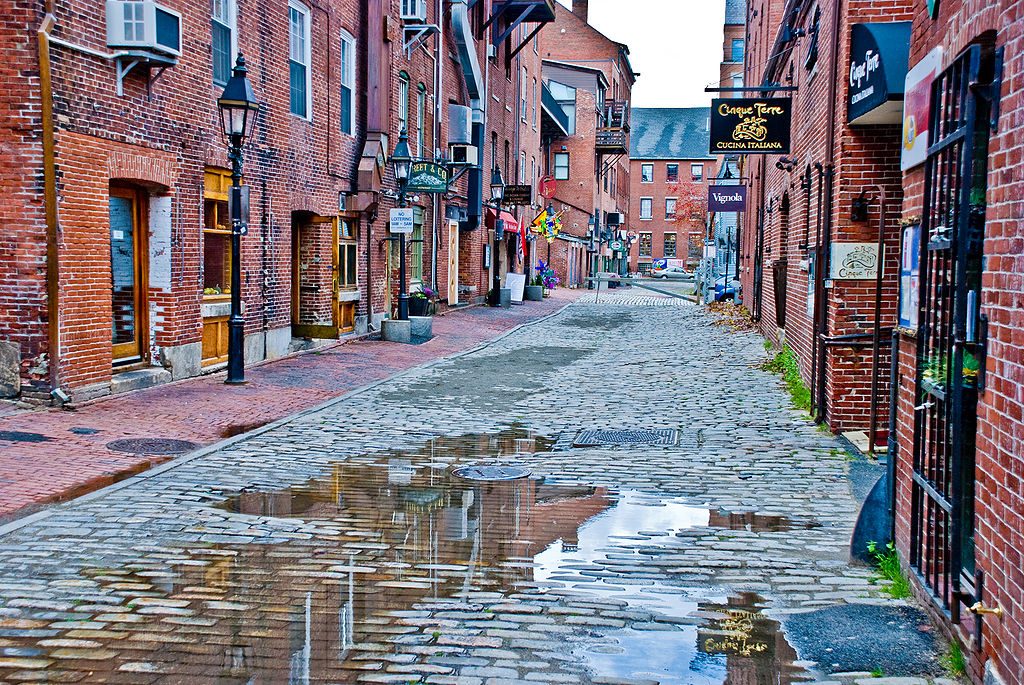
A pedestrian street in the Old Port in Portland, Maine, a neighborhood popular with tourists. Musician and author Dar Williams says towns thrive when they achieve a balance between places of interest to visitors and those of interest to residents. Photo by PhilipC via Flickr
Building More, to Burn Less
New England is at a time of big change in the way we get our energy. Aggressive goals to cut carbon emissions have meant a move toward more renewable sources of power. But the shift from burning fossil fuels to harvesting sun and wind power comes with challenges in a region where it’s not always easy to find space for big energy projects. The New England News Collaborative is covering these changes in a project we call The Big Switch.
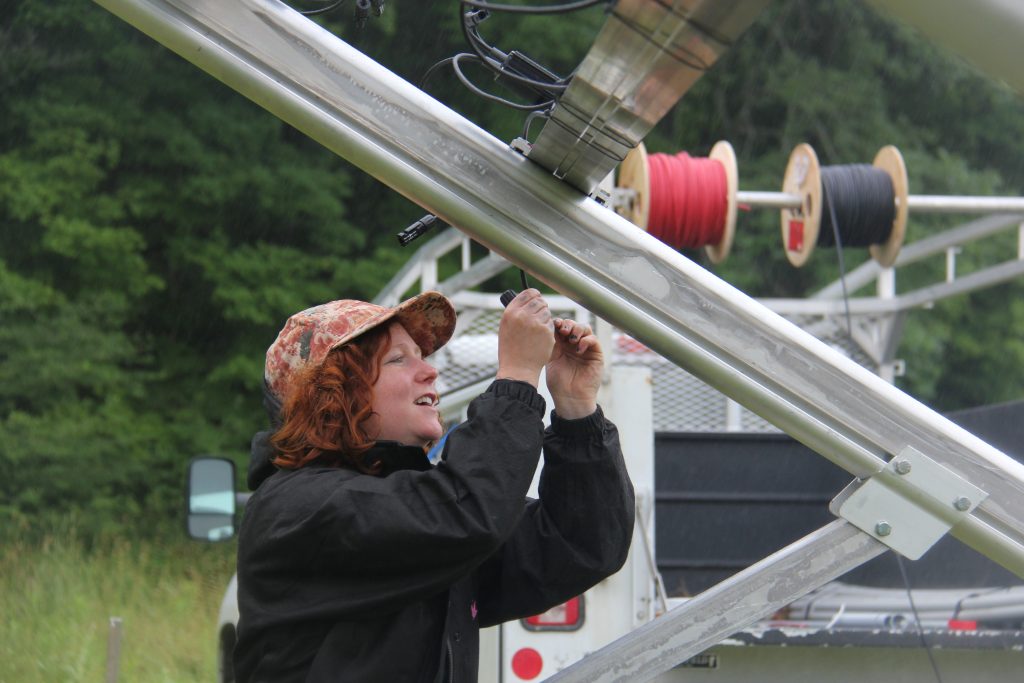
Randolph-based Catamount Solar is installing an 8.7 kilowatt system in a homeowner’s yard in East Montpelier, Vermont. Kestrel Marcel is connecting the optimizers, which are a converter technology that helps maximize the energy harvested from the panels. Photo by Kathleen Masterson for VPR

Farmer Kevin Sullivan rents a portion of his Suffield, Connecticut farmland to a solar company. “The money that comes off that acreage exceeds anything else I could do out there,” he says. Photo by Patrick Skahill for WNPR
Vermont has been leading the way on solar energy for years. It’s got a small population, but big goals for renewable energy. That’s meant more competition in the solar installation field — with big national companies coming in to fight local companies for customers. As VPR’s Kathleen Masterson reports, that competition comes at a tricky time.
While Vermont has been pushing more residential solar, other states see the promise of solar panels helping to preserve dwindling farmland. As WNPR’s Patrick Skahill reports, solar energy is providing many farmers – particularly in southern New England – with new opportunities, and questions.

Bayside Anchor is an affordable passive housing development in Portland, Maine. Photo by Fred Bever for Maine Public
And there’s innovation on the other side of the power equation, too. A new type of energy-efficient construction is drawing attention in the U.S. So-called “passive housing” residences are built to achieve ultra-low energy use. In fact, passive housing is so efficient that developers can eliminate central heating systems altogether.
Imported from Germany, it’s been a boutique building style until recently, with eco-minded home owners making costly upfront investments to downsize their carbon footprints. But now, New England is joining a surge in large-scale passive housing development. Maine Public Radio’s Fred Bever reports.
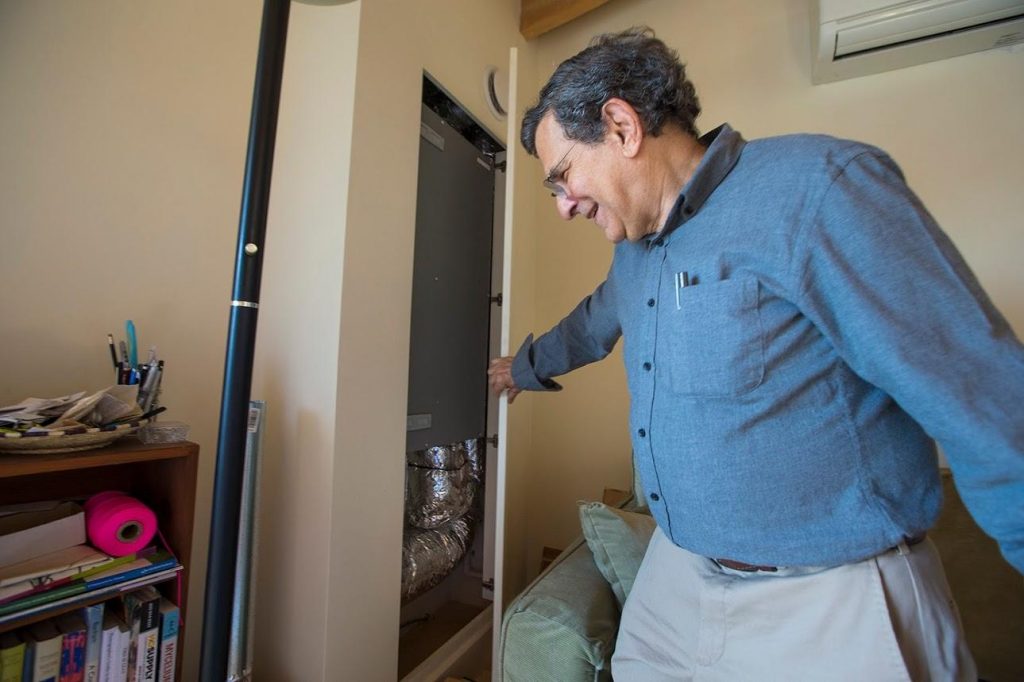
Fred Gordon opens a panel in the wall of his unit at the Distillery North Apartments in Boston to show the heat recovery ventilator. It provides fresh air, transferring 95 percent of the heat collected from the apartment and recirculating it with cold air from outside. Photo by Jesse Costa for WBUR.
Building a Better Place to Call Home
 Have you ever revisited a town you hadn’t seen in years and thought “This place has really changed!”? Suddenly, there’s a new row of restaurants; or a boarded-up mill building has come back to life. Maybe you’ve witnessed the opposite: a hollowed-out shell of a once-busy main street.
Have you ever revisited a town you hadn’t seen in years and thought “This place has really changed!”? Suddenly, there’s a new row of restaurants; or a boarded-up mill building has come back to life. Maybe you’ve witnessed the opposite: a hollowed-out shell of a once-busy main street.
As a touring musician, singer-songwriter Dar Williams has a front seat to the changes happening in American towns large and small. Her new book is What I Found in a Thousand Towns: A Traveling Musician’s Guide to Rebuilding America’s Communities – One Coffee Shop, Dog Run, & Open-Mike Night at a Time. In her writing, Williams theorizes about why some towns thrive, and others can’t seem to get out of their post-industrial slump.
The book is peppered with references to New England towns, and Williams has personal history here. She lived and worked in Boston, and Western Massachusetts, and spent her undergrad years at Wesleyan University in Middletown, Connecticut in the 1980s.
All About Craft
The craft beer industry in New England has plenty to raise a glass to. Craft beer is growing faster here than anywhere in the country.
But is growing too fast? Is it possible to have too much craft beer? Tom Verde went to find out.
In the mid-1800s, New England was a global center for the clockmaking industry. Today, the region is filled with antique, often centuries-old clocks — in church steeples, libraries, courthouses, and homes.
That industry, of course, is long gone. And slowly, the people who preserve its artifacts are disappearing, too. Dan Richards reports.
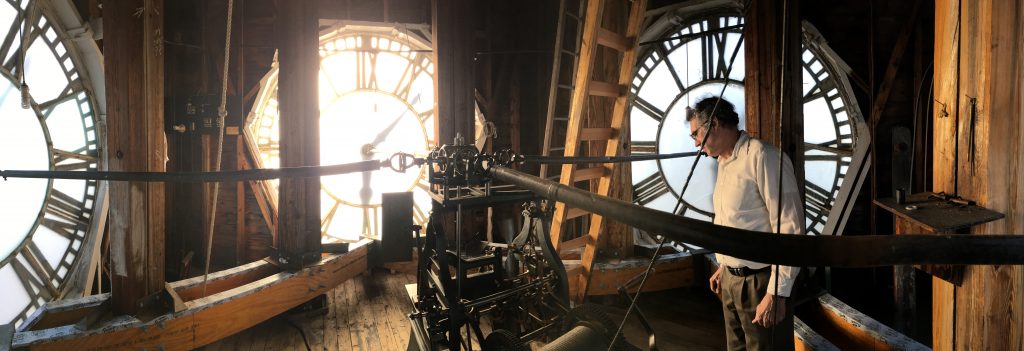
Master clockmaker James Roberts examines a churchtower clock in Redding, Mass. The timepiece in the center connects to four transparent glass dials, one on each wall.
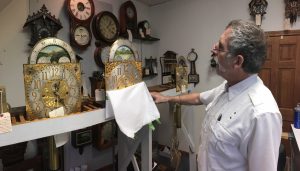
David Roberts with a clock face and dial that he and his brother James restored. Photo by Dan Richards for NEXT.
About NEXT
NEXT is produced at WNPR.
Host: John Dankosky
Producer: Andrea Muraskin
Executive Producer: Catie Talarski
Contributors to this episode: Kathleen Masterson, Patrick Skahill, Fred Bever, Tom Verde, and Dan Richards
Music: Todd Merrell, “New England” by Goodnight Blue Moon
We appreciate your feedback! Send praise, critique, suggestions, questions, story leads, and raves about your favorite brewery to next@wnpr.org.


